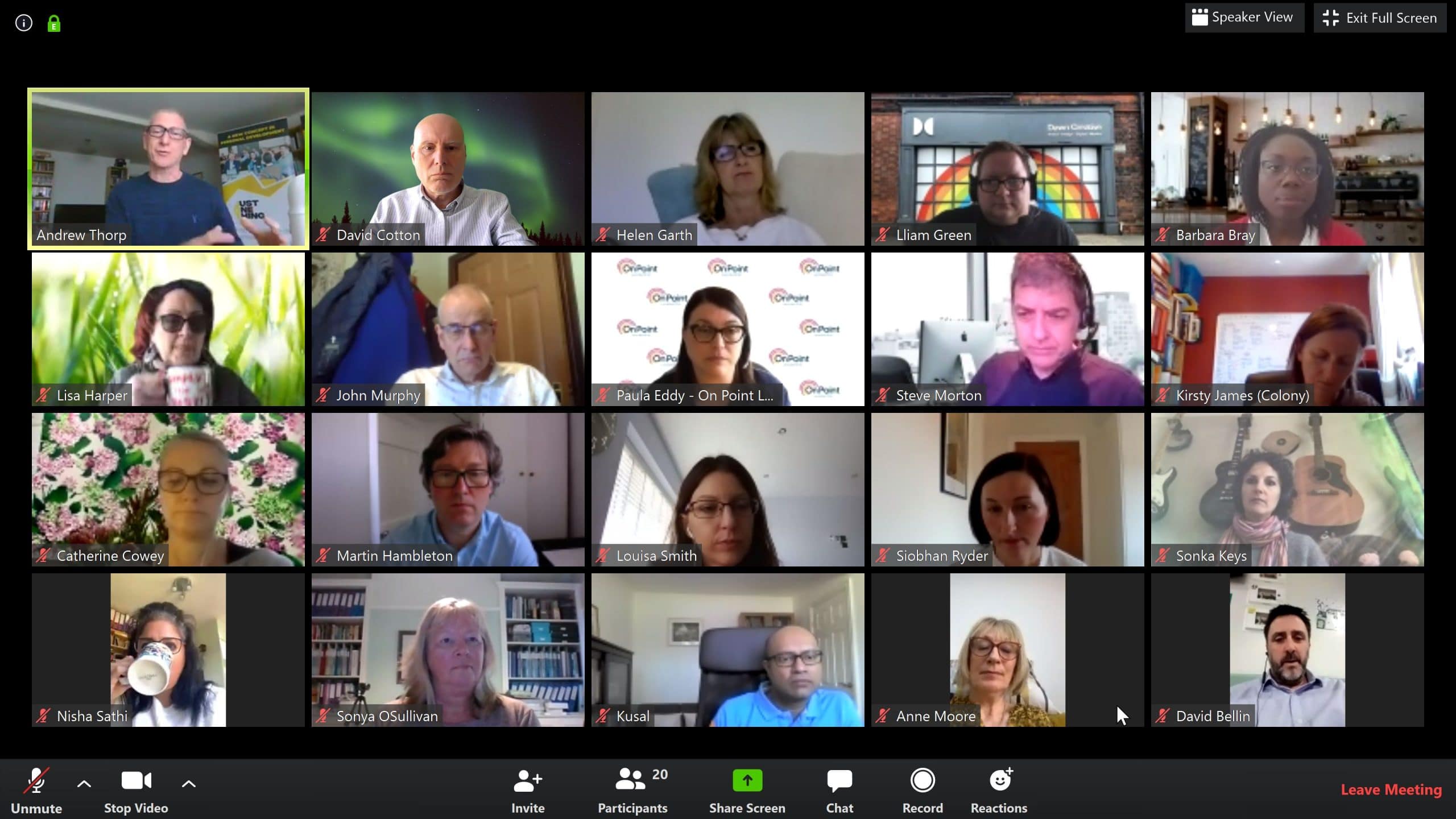
Then my whole world went zoom.
Fat Larry’s Band might have reached No.2 in the 1982 UK singles chart with “Zoom” but I don’t think that word was on our lips quite as much as it is now. Forced into working from home, it seems that half the planet is currently using this video conferencing platform. It’s a wonderful way to stay in touch with colleagues, friends and family but it’s not all rosey – it seems that ‘Zoom fatigue’ is now a thing!
As a host of a fortnightly Zoom meeting myself, I may be contributing to this phenomenon but I’m getting a sense of what this malady means. It’s piqued my curiosity so here are a few thoughts and potential strategies, gleaned from existing articles and conversations.
How are you feeling?
Many Zoomers (and this extends to other platforms of course) have reported feelings of exhaustion and anxiety after protracted periods on video calls. Cast your memory back to long conversations in the pub, over dinner or at group events – you’re in flow, soaking up the atmosphere, energised by the occasion and your fellow participants. The high lingers for a while and slowly you come down as you reflect on the experience before moving on to something else.
Why is it that one fuels you while the other drains your energy?
The mirror
In a normal face-to-face conversation you don’t see yourself speaking but with video calls it’s distracting and energy-sapping to ‘maintain’ your performance, when your face is visible too. Is your head straight, are you too close, too far away, slouching, grimacing or putting on weight?
Attention please!
It takes more effort to remain focused on video calls. Compared with a physical event, there’s less ‘commitment’ to stay in the moment (and stay in the room); it’s all too easy to zone out but we’re aware that we should be trying to at least look interested.
(Presenters have to be aware of this too, which makes telling an engaging, audience-focused story that much more important!).
Video calls make it much harder to pick up all those non-verbal cues which convey intent and meaning in conversations. During in-person exchanges we read so much into micro-expressions – a fleeting wink, a smirk, a semi-raised eyebrow or a shifting of weight from one foot to the other. These are next to impossible to see on screen, so we have to work harder to interpret what people are saying (and what they actually mean).
Our minds are together when our bodies feel they’re not. (Professor Gianpiero Petriglieri)

Look at me when I’m speaking to you
Video conferencing is an incredible invention but they still haven’t cracked the issue of eye contact; do you look at the face on the screen or the camera? Conversation is about connection and if you’re not looking at each other it’s unsettling and detracts from the ‘know, like and trust’ principle of relationship-building.
I also didn’t realise that we blink half as often when we watch a screen than in face-to-face interactions. So eyes get dry, irritated and tired. Fast Company magazine writer Elizabeth Grace Saunders suggests we try the 20 20 20 technique – every 20 mins, look at something 20 feet away for 20 secs.
It’s all a bit flat
There’s something weird about having all your conversations on a two-dimensional screen. It’s harder to process things when there’s no depth, no spatial awareness. Normally in a group setting you’d naturally focus on the people directly in front of you, with the rest being in your peripheral vision (or behind). In Zoom’s gallery view you’ve got everyone on a flat screen (plus YOU) and everyone appears in different light, proportions and environments. Who knew sitting on your backside could be so exhausting?
It’s like watching several different TV shows side by side, while checking the mirror to see how you look (Elizabeth Grace Saunders, Fast Company)
Awkward silences
In normal conversations it’s perfectly natural to have occasional pauses; we’re forming our thoughts, taking a breather and we might break eye contact for a moment before getting back into it. But silences on virtual calls produce more anxiety; tiny lags and connection problems interrupt the rhythm of a conversation and can impair the relationship we’re trying to build.
It’s all happening at home
We are used to home being a sanctuary where we can decompress, reflect on the day with loved ones and focus on things other than work. But now everything’s occurring in the same place (through the same device) and that blurs the line between work and leisure.
In ‘normal life’ we would do different things in different places, physically moving between varied environments and ‘re-setting’ ourselves for the next thing. That’s gone now and although it sounds more efficient, there’s a value in that ‘in-between’ time. Without the physical effort of moving from one thing to the next, we’re sitting on our backsides a lot while lamenting the loss of variety in our lives.
When you consider this, in addition to the broader anxiety around the pandemic, it’s no wonder a steady diet of video calls can be troublesome.
What can we do?
It’s likely that virtual working is here to stay, but we need to ration it wherever possible. Like any unbalanced diet it can cause physical and psychological problems. Here’s some things we might do:
- Restrict the length and frequency of video calls. Leave gaps between so you can do something else.
- Avoid dumping lots of information on people during the call. Send it via email and use the time online to discuss what you’ve all read. This is the principle behind the Khan Academy, where traditional methods of schooling have been turned upside down.
- Enquire about people’s wellbeing before you launch into the nitty-gritty of the call. Make sure you mean it!
- Turn off your camera from time to time, to relieve the pressure of being on-view and judged. If possible, turn off your self-view to avoid being distracted by your own performance.
- Don’t forget the plain old phone call. In the absence of visual pressures you may find it easier to focus on the other person and settle into the conversation. In most cases there’s no awkward time lag and you’re not chained to the screen; you can wander around and movement may free up your thinking.
Finally, if you’re presenting content make sure what you deliver is engaging, insightful and audience-focused. Otherwise you may find people jumping ship altogether!
Useful resources relating to this article:
https://www.mnn.com/health/fitness-well-being/stories/zoom-fatigue-video-conferencing
https://www.bbc.com/worklife/article/20200421-why-zoom-video-chats-are-so-exhausting
https://www.psychologytoday.com/us/blog/lifetime-connections/202004/zoom-fatigue-dont-let-video-meetings-zap-your-energy
https://www.fastcompany.com/90490716/ill-be-right-back-how-to-protect-your-energy-during-zoom-meetings
https://www.stylist.co.uk/life/zoom-fatigue-video-call-virtual-drinks-exhaustion-tiring/376846

